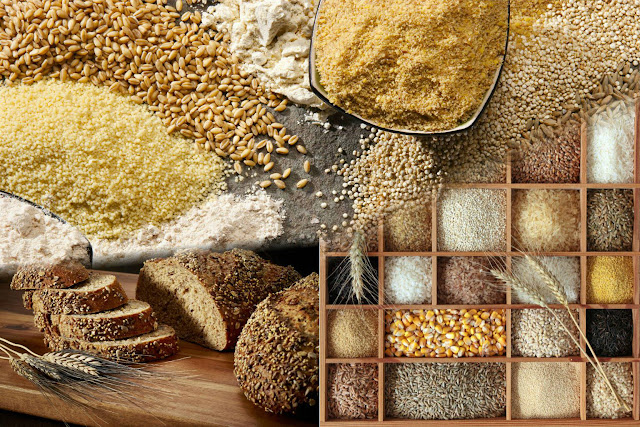Whole Grains and Weight Loss
Weight loss and dieting are a multi-million dollar industry in the United States today. Many of these diets can be expensive and are often unsustainable. And more concerning, some of these weight loss plans and strategies can be down-right unhealthy. One very effective and completely beneficial weight loss strategy is to regularly incorporate whole grains into your diet.
Weight loss is essentially a numbers game, calories eaten verses calories used. To achieve weight loss you have to have a calorie deficit, meaning you use or expend more calories that you eat. If your calorie intake is more than your calories use, you will store those extra calories as fat. If you have a calorie deficit, you will use some of your stored calories (fat) as energy. Eating a diet that is rich in whole grains will help you decrease your calorie intake.
Numerous studies show eating a diet rich in whole grains is associated with a lower BMI and decreases the incidence of becoming overweight or obese. In fact according to the findings in a recent Dutch study, every additional gram of whole grains in their subjects' diets reduced incidence of obesity by 10% on men and 4% in women (1).
What Does Whole Grain Mean?
According to the Whole Grain Council, the definition of a whole grain is a grain that contains all essential parts of the grain seed. If that grain has been processed in any way, it must deliver the same balance of nutrients as it would in the original grain form .How do Whole Grains Help You Lose Weight?
- Satiety/Fullness: Whole grain foods are typically high in fiber, so they help fill you up, with less volume. Fiber in food slows down how fast the digestive tract breaks down food, therefore you fill fuller longer. This feeling of fullness should help you eat less at that meal and decrease total caloric intake.
- Low glycemic index: Whole grains are typically low glycemic index foods. Glycemic index (GI) is a function of how quickly a particular food breaks down and gets into the blood stream, to cause an increase/spike in blood sugar or glucose. GI is also a measure of how high that spike is. If a food has a high GI that means it digests and becomes blood sugar very quickly, but then is used up very quickly. You then have a rapid rise and fall of blood sugar. If a food has a low GI then it is digested and gets released into the blood stream more slowly, resulting in a more gradual rise and fall of blood sugar. One of the things that determines hunger and appetite are changes in blood sugar. If what you eat is rapidly “used up” then you will feel hungry sooner. This will increase your overall calorie intake throughout the day. Therefore, you should eat more low GI foods, such as whole grains, to help sustain more gradual blood sugar changes after a meal and throughout the day.
- Decrease fat absorption: Fiber increases elimination rate… you go to the bathroom more often. Dietary fiber aids in regulation of normal bowel movements and increases how fast stool moves threw the gastrointestinal tract. This decreases the amount of fat that can be absorbed from the food you eat.
- Increased protein content : It has been well established that increasing protein intake will help with weight loss and weight maintenance. Whole grains are typically higher in protein than their refined counterpart.
The Dietary Guidleines for Americans recommends that whole grains make up at least half of all grains eaten. That is at least 3-5 servings per day. This may sound like a lot, but look at this sample 1 day menu for some ideas on how to incorporate whole grains into your day.
Breakfast:
- 1 cup of Old Fashioned Oatmeal or Steel Cut oats (2 serving of whole grains)
- 1 medium banana
- Turkey and cheese sandwich on whole wheat bread (2 servings of whole grains)
- ½ cup of carrot sticks
- Low fat/low sugar fruit yogurt
- Whole grain granola bar (1-2 serving depending on the size)
- 1 cup of whole wheat pasta with marinara sauce with lean ground beef (2 servings)
- Side salad with low fat dressing
As you can see, this sample menu has 7-8 total servings of whole grains and could easily have more whole grain items. The bottom line is, as with any healthy lifestyle change, adding whole grain foods to your diet takes planning and forethought. Please do not be discouraged because with time and consistency this will become second nature, it will be just the way you eat!













0 comments: